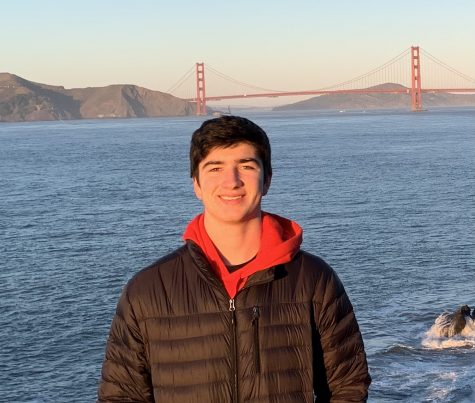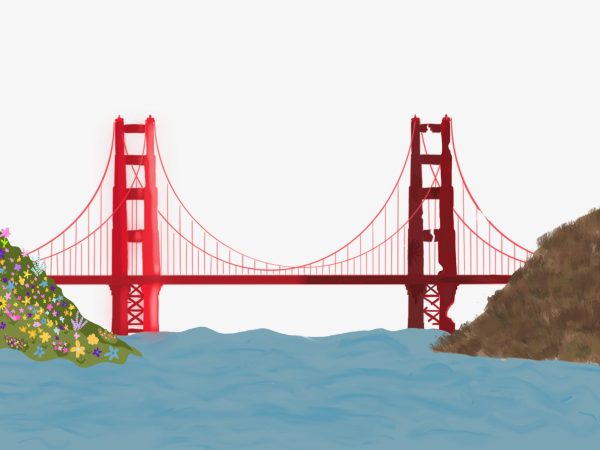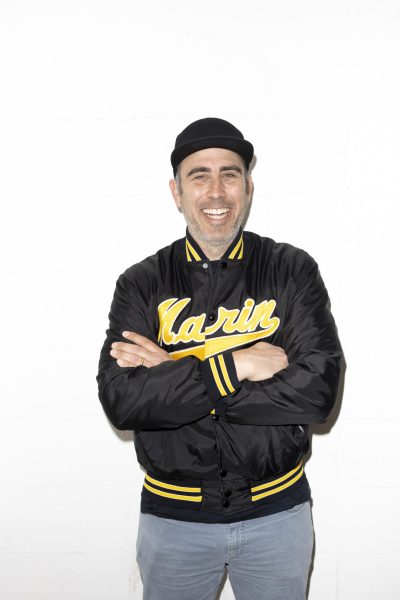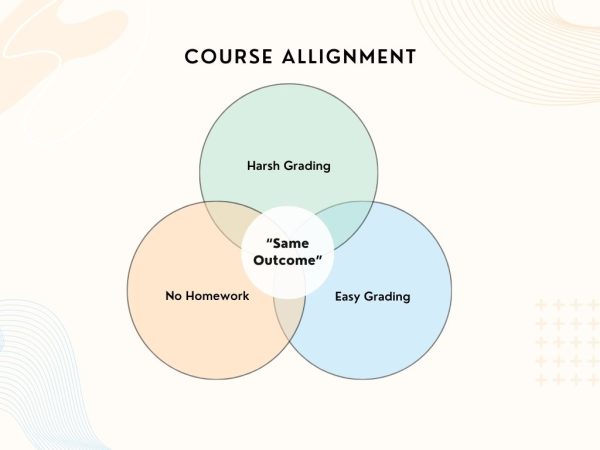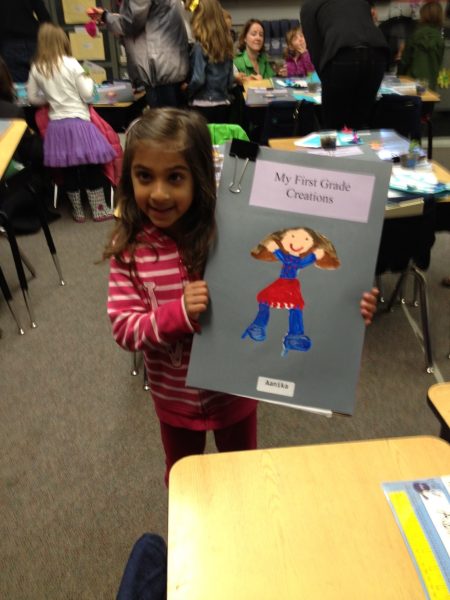A divided America: how we got here and what the future holds
February 11, 2021
@TefPoe: “I cant be friends with you if ur a republican.”
@MB11605946: “Libtard.”
@om_eye_goodness: “If you support [Trump], you’re okay with racism.”
@DanRadovich: “You are a Democrat Socialist hypocrite.”
These quotes, written and posted by real people on Twitter, provide an unfiltered glimpse into what American politics have been like since 2016.
Where we are
“Americans have rarely been as polarized as they are today … it will be a difficult struggle to bridge the deep and bitter divisions in American society,” Pew Research said in a 2020 study on political polarization. The differences between Republicans and Democrats are no longer limited to differing opinions. Now, each party has come to believe that the other is a legitimate danger to society.
Maya Goldman, a journalist at Inside Health Policy who has published several articles in the Wall Street Journal, is not optimistic about the nation’s future.
“I think there is a really deep divide in this country and it’s going to be a really difficult thing to address because it’s been festering for so long,” Goldman said.
A month before the 2020 election, the same Pew Research survey found that roughly 8-in-10 registered voters in both camps said their differences with the other side were about core American values, and roughly 9-in-10 worried that a victory by the opposing party would lead to “lasting harm” to the United States. Additionally, a Bark survey conducted in January 2020 found that 89 percent of Redwood students would describe our current political landscape as “deeply divided.”
Political division is nothing new to the U.S. or any other country for that matter. In fact, ideologically, the U.S. is just as divided as it has ever been. However, affective polarization, which measures the extent to which two parties dislike each other, has increased dramatically over the last two decades. In other words, Republicans and Democrats do not disagree with each other much more than usual, but they dislike and distrust each other more now.
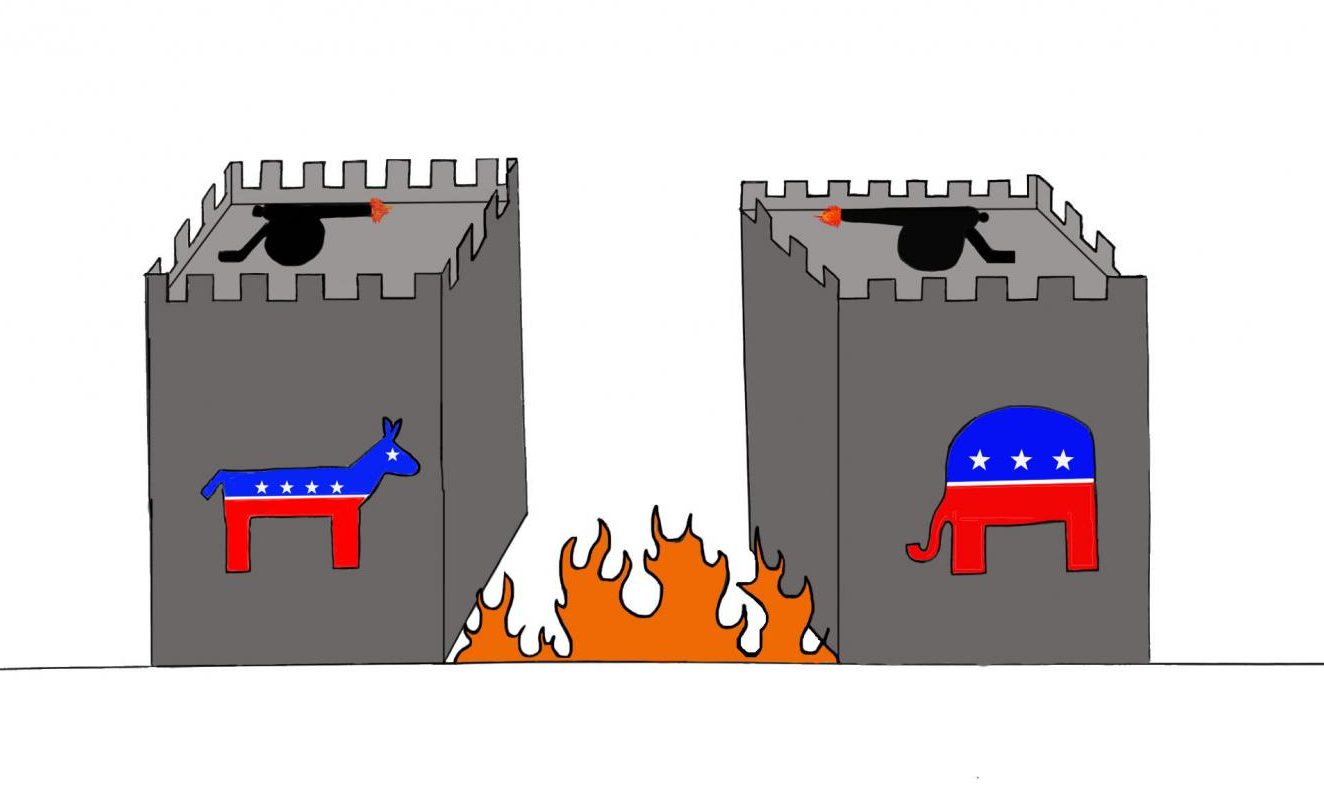
Part of the reason for this increase in affective polarization can be attributed to the development of partisanship as a social identity. According to a 2018 study published in Annual Reviews, social groups are forming around political affiliation, and friendships are now being affected by politics. When groups form, so does herd mentality, and humans automatically dislike opposing groups –– hence the increase in affective polarization.
While junior Denia Mittleman’s social circles are not defined by partisanship, she has witnessed some of the effects firsthand.
“I’ve seen some of my friends get angry with each other over a really small [political] disagreement,” Mittleman said. “I don’t think that politics should be something that we judge other people based on. It’s hard for people to break away from what they’ve been taught their entire lives.”
How we got here
Yolanda Bellisimo, College of Marin political science professor, understands the root cause behind the country’s deep divide.
“The United States is going through what political scientists refer to as a party realignment [which] happens about every generation. So it’s not totally out of the norm, it’s almost expected that [the U.S.] does this every 35 to 40 years,” Bellisimo said.
A party realignment is when one party begins to shift its ideals and priorities, causing people to subsequently leave the party because they no longer share the same vision and goals. According to Bellisimo, Trump represents the radical end of the Republican party, which has seized power from moderate republicans.
“The Republicans are going to split between the radical Trump end of the party and the more moderate end of the party. The two groups can no longer hold themselves together because they have competing interests. A lot of the current destabilization in the country is just that realignment,” Bellisimo said.
Bellisimo claims that this realignment is, for now, limited to the Republican party. The election of Donald Trump signified the radical right taking power of the Republican party, whereas even though the radical left is very vocal, moderates — such as President Biden, Nancy Pelosi and Kamala Harris — still control the Democratic party.
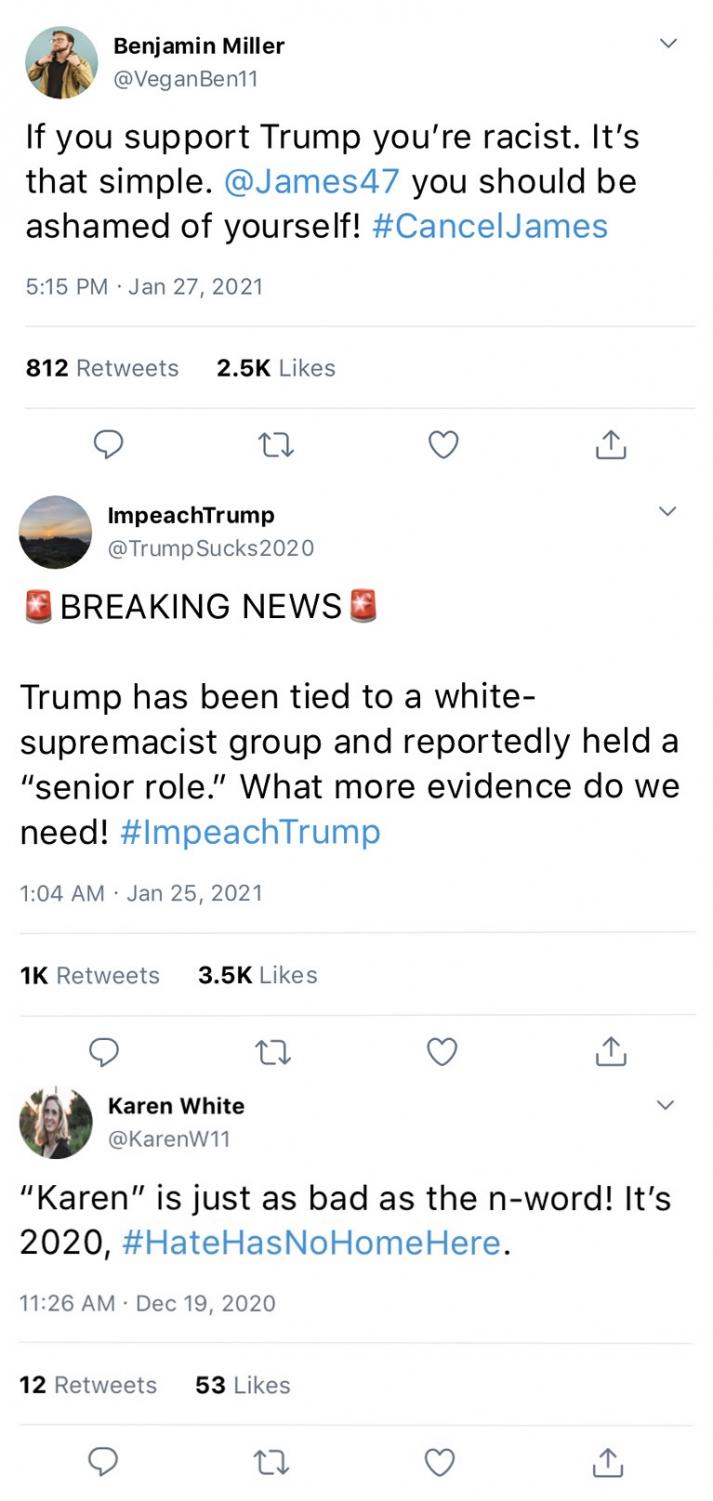
Additionally, according to Bellisimo, the divisions run deeper within the Republicans than the Democrats.
“Republican moderates don’t want the central government interfering, but they want the central government to protect and help develop business. The populace are suspicious of the central government,” Bellisimo said. “The progressive [Democrats] are not two factions disagreeing with one another, they just disagree over how much you’re going to do and how fast you’re going to do it.”
The Republican realignment catalyzed the United States’ divide, but having been set in motion, there are a variety of factors widening the division. One such factor, which has recently been coined as “fake news,” is inflammatory and biased media coverage. Mittleman understands the effect of biased coverage on the U.S., especially on people who are unaware that their news is being presented through a filtered lens.
“[Biased news sources] are really detrimental because, if you tell a story, you’re going to tell it from your perspective, which is going to be very different from the other person who’s affected,” Mittleman said. “It creates a vicious circle because everyone believes they’re right.”
According to Bellisimo, inflammatory press has always been present in American politics.
“That idea of using information in dramatic ways to force people to ideological extremes is really not new,” Bellisimo said. “You can look at the [tactics] that were used in campaigns when Andrew Jackson ran against John Quincy Adams. They said really awful things about each other.”
What is new, and perhaps distinguishing this divide from others, is social media. Social media algorithms are designed to present the user with content that pleases them in order to keep the user on the app as long as possible. For example, if a user is a fan of the National Basketball Association, the app will repeatedly feed them highlights from games to keep them engaged.
But the algorithms that make social media more entertaining also have much darker side effects: “echo-chambers.” This is an environment where a person only encounters information or opinions that reflect and reinforce their own ideas. According to a psychology article that appeared in The Guardian, a liberal scrolling through Twitter will have their feed become more and more leftist over time, and the same is true for conservatives. A liberal will only be presented with like-minded opinions, news articles from left-leaning publications and links to news that distorts the facts in accordance with a liberal agenda. Essentially, once that person logs onto social media, they are living in an entirely different reality; a world where everyone agrees with their opinion and their opinion alone.
This creation of a false reality, in extreme cases, can lead to obscure conspiracy theories with real consequences, such as “Pizzagate.” In 2016, a man walked into a Washington pizza restaurant bearing an assault rifle and demanding answers; he was under the belief that the restaurant was a front for a child sex ring orchestrated by the Clintons. The story that led to the man’s actions, which was entirely false, had spread through social media sites to millions of users.
“Social media is very scary. Just looking at my own social media feeds and seeing a really crazy echo chamber, I have to remind myself that’s not what lots of people’s feeds look like,” Goldman said.
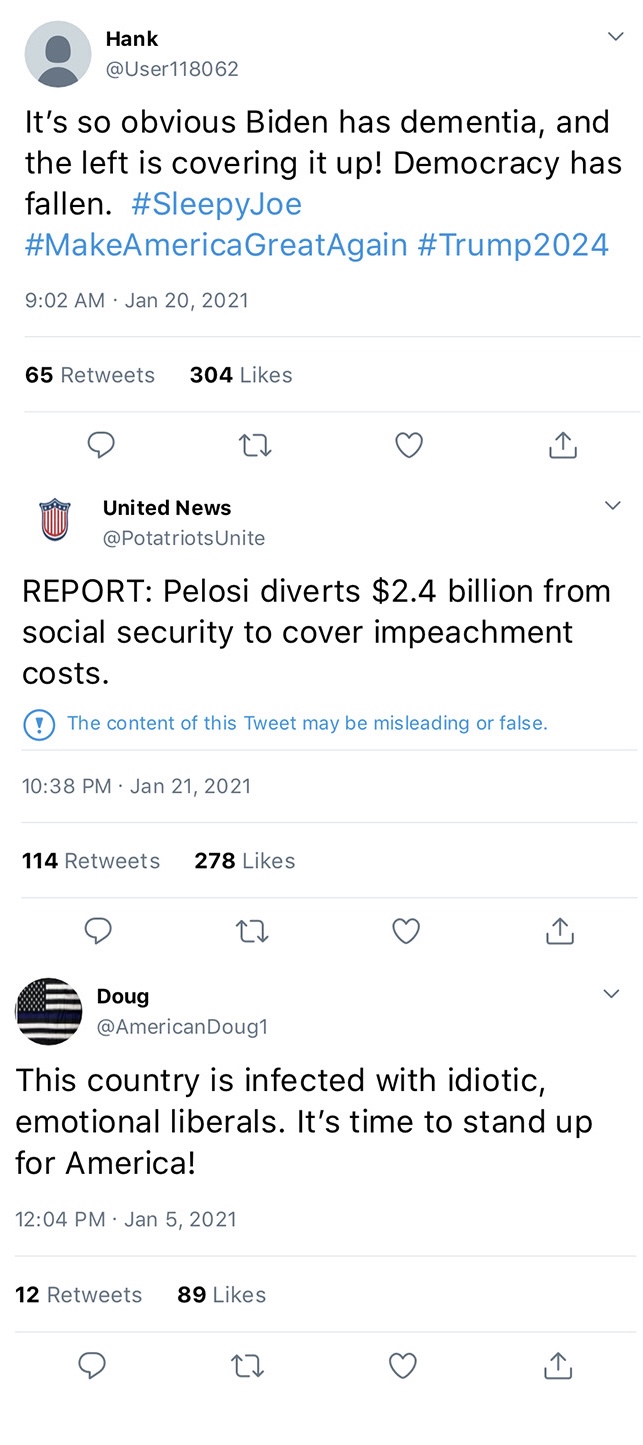
In addition to creating these echo chambers, social media is addictive, enveloping people in political conflict for hours every single day.
“It’s really not new that we’ve created this divisiveness, but now it’s every day and it’s in every form of media you can think of. It’s more pervasive now,” Bellisimo said.
According to a Pew Research study conducted in July 2020, 18 percent of U.S. adults reported the most common way they get political and election news is through social media. In that same study, it was found that those who rely on social media for news are more likely to hear fake news and less likely to hear the actual facts. Additionally, a Massachusetts Institute of Technology study found that on Twitter, fake news travels six times faster than the truth. Social media is not only divisive in its nature, but it is also where fake news thrives –– further contributing to creating different realities for each user.
Social media has inflamed nearly every factor that contributes to political polarity. It is easier to spread lies presented as facts, easier to share biased news sources, easier to drown out the voice of moderates, easier for a polarizing president to communicate with the country, easier to insult others for their political beliefs while hiding behind a screen –– the list is endless. So what does the future hold with this new variable in play?
Where we’re going
Luckily, the situation is not necessarily as dire as it may seem. Bellisimo predicts that the party realignment will run its course, as it always has, and the U.S. will not delve into any major conflict. However, in order to become a more unified country, specific actions should be taken.
While Goldman acknowledges that biased media does have a polarizing effect, she hopes that journalists will always stay true to the facts.
“I think the media does bear some of the burden for the divide in the country … there’s a lot of responsibility that comes with [journalism]. I definitely don’t take it lightly, and I hope that other journalists don’t either,” Goldman said.
Goldman also hopes that Americans will be taught about news biases in school, helping them insulate themselves against potential biases and false news.
“I would love to see media literacy as something that’s taught as far down as elementary schools. I think that would do a lot to improve media consumption in the country, which would probably do a lot to ease other tensions,” Goldman said.
Social media sites, including Facebook, Twitter and Instagram, have also recently made efforts to combat fake news. All of the sites have implemented fact-checking services of varying degrees, which flag a post when it contains information that may be false or misleading. Twitter aspires to go a step further, as they recently launched a pilot program called “Birdwatch,” which allows Twitter users to provide context to false or misleading Tweets posted by other users. The program is currently only available to 1,000 users in the U.S. but the company hopes to expand its services in the near future. By fighting against fake news, social media is also indirectly fighting against political polarity.
The United States is a divided nation, seemingly on the brink of tearing itself apart. Driven by a party realignment, inflamed by the advent of social media echo chambers, we are more polarized than ever in the last three decades. However, the issue is widely known and innovative solutions are underway to address the situation. No one can predict the future, but if history repeats itself, the United States will emerge stronger and more united than before.

